
Peru
For a full scale picture, please click on the picture shown !
Perurail
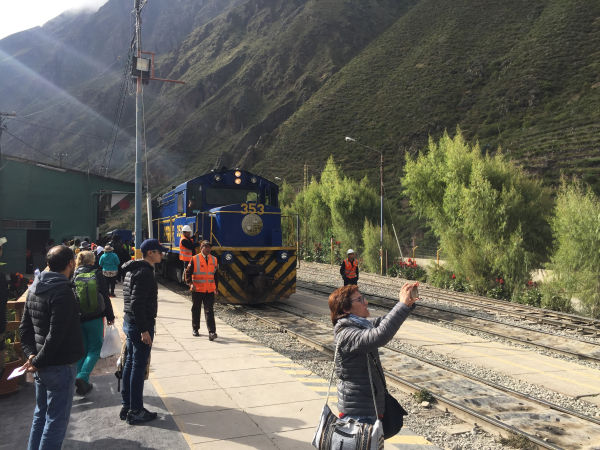
Perurail locomotive 353 doing shunting at the Ollantaytambo station.
Picture 29.3.2018 by Pekka Ihalainen.
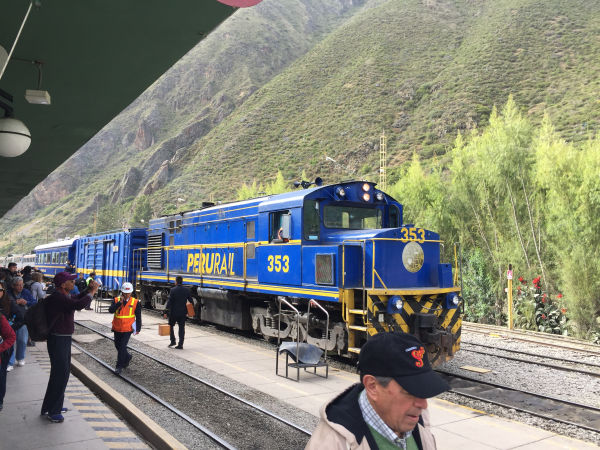
Perurail locomotive 353 doing shunting at the Ollantaytambo station.The locomotives no. 350-360 are now 914 mm gauge, but they used to be normal
1435 mm gauge engines. They are of the type ALCo DL535B, built in 1963 for F.C del Sur del Peru, the Peru Southern railroads.
Picture from the Ollantaytambo station 29.3.2018 by Pekka Ihalainen.
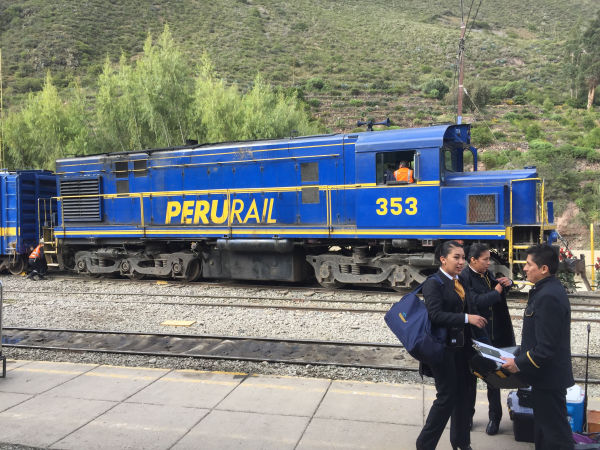
A closeup picture of the same ALCo engine.
Picture from the Ollantaytambo station 29.3.2018 by Pekka Ihalainen.
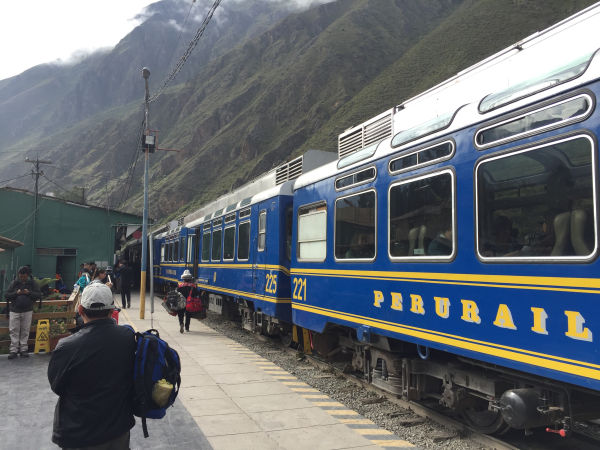
Perurail's modern coaches.
Picture from the Ollantaytambo station 29.3.2018 by Pekka Ihalainen.
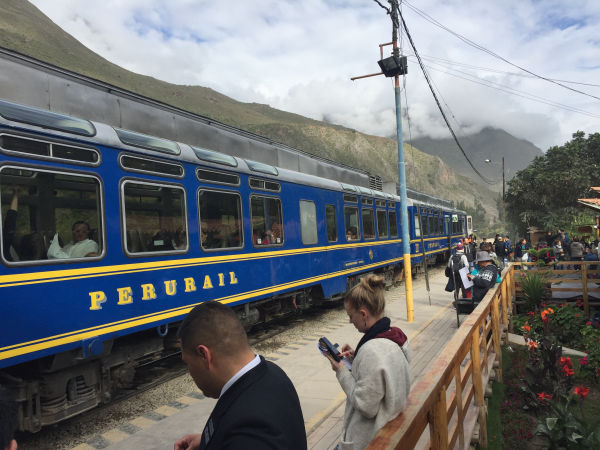
Perurail's modern coaches.
Picture from the Ollantaytambo station 29.3.2018 by Pekka Ihalainen.
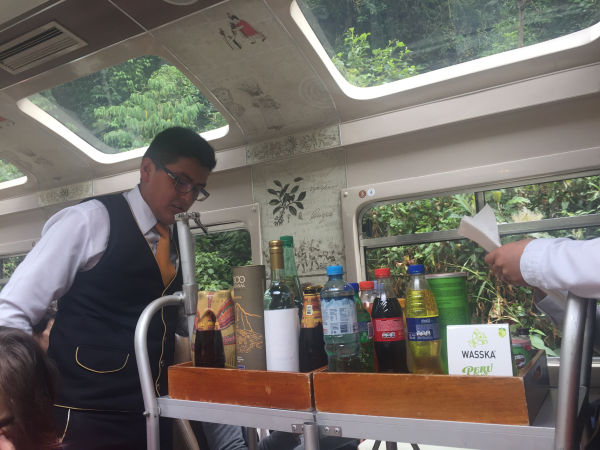
Perurail serving drinks to tourists. This picture and the pictures shown above are from the line Ollantaytambo - Aguas Calientes,
that is, the line taking tourists to just below the famous Machu Picchu touristic site.
Picture 29.3.2018 by Pekka Ihalainen.
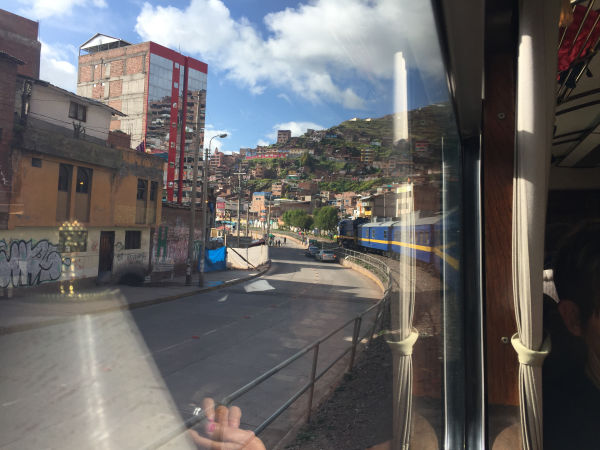
Picture through a train window from a Cusco to Puno train line train. This picture is from Cusco as the train is just leaving the city.
The line is called Titicaca Train and it is purely touristic train service run a couple of times per week with fairly luxurious train
coaches. The line ends at Puno by the lake Titicaca and by the border to Bolivia.
Picture 30.3.2018 by Pekka Ihalainen.
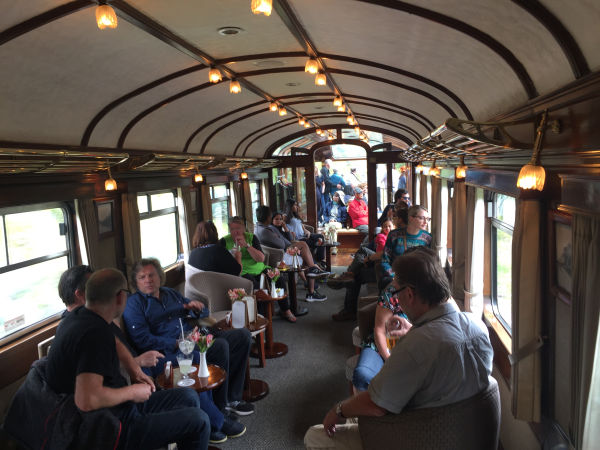
Tourists enjoying a ride on the Titicaca Train.
Picture 30.3.2018 by Pekka Ihalainen.
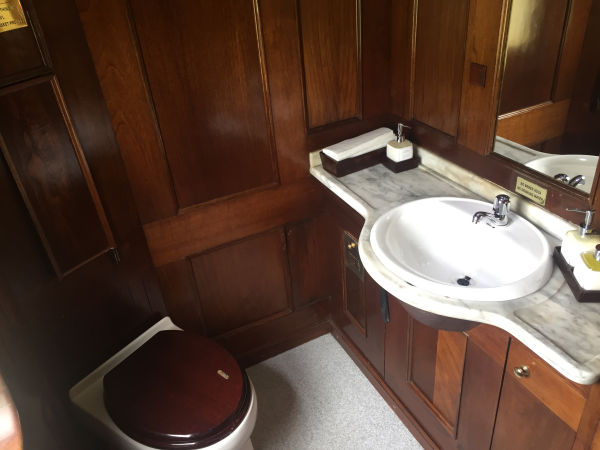
The luxurious train toilet on the Titicaca Train.
Picture 30.3.2018 by Pekka Ihalainen.
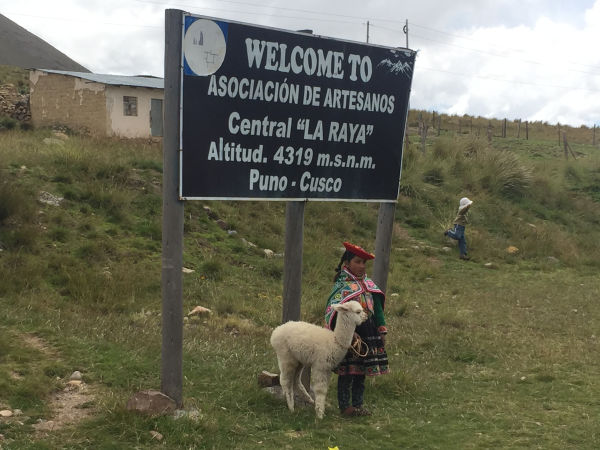
La Raya is the highest point of the Cusco to Puno train line, at 4319 metres over sea level. It has been built into an artisanal tourist
attraction where the local indian population can sell their handicrafts to tourists. This is the world's fourth highest spot that you can reach
with a train.
Picture 30.3.2018 by Pekka Ihalainen.
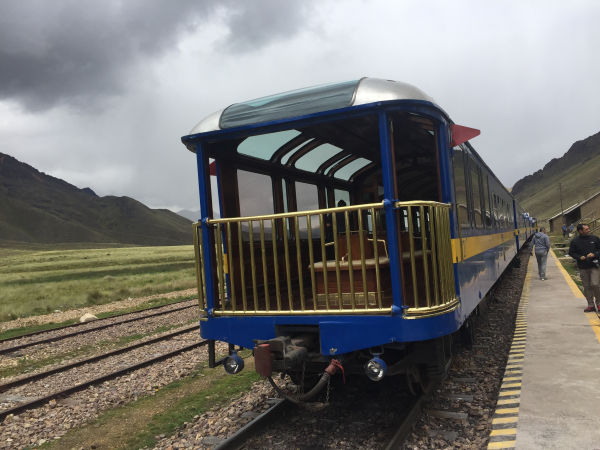
The Titicaca Train stopping at La Raya.
Picture 30.3.2018 by Pekka Ihalainen.
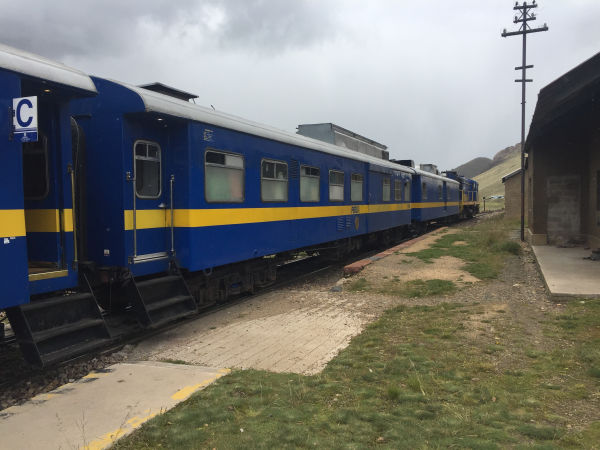
The Titicaca Train coaches and locomotive at La Raya.
Picture 30.3.2018 by Pekka Ihalainen.
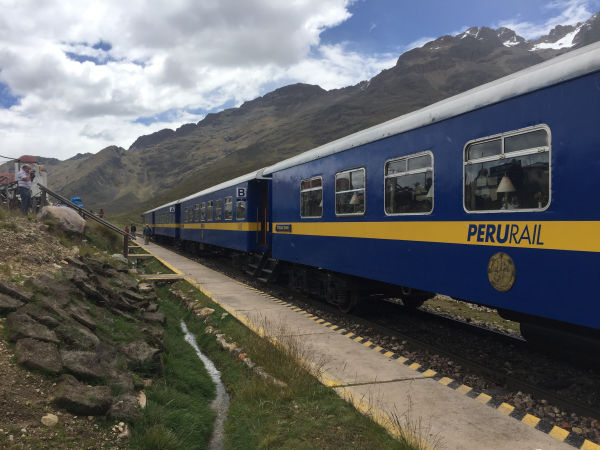
Titicaca Train coaches at La Raya, 4319 metres over sea level.
Picture 30.3.2018 by Pekka Ihalainen.
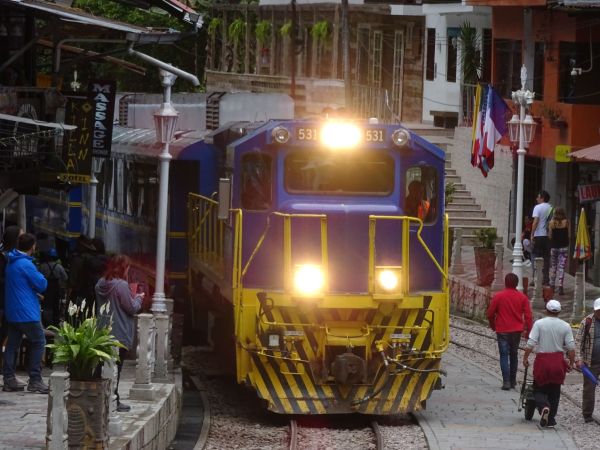
Perurail's locomotive 531 leading a train along the narrow streets of Cusco.
Picture in October 2018 by Adrian Gray.
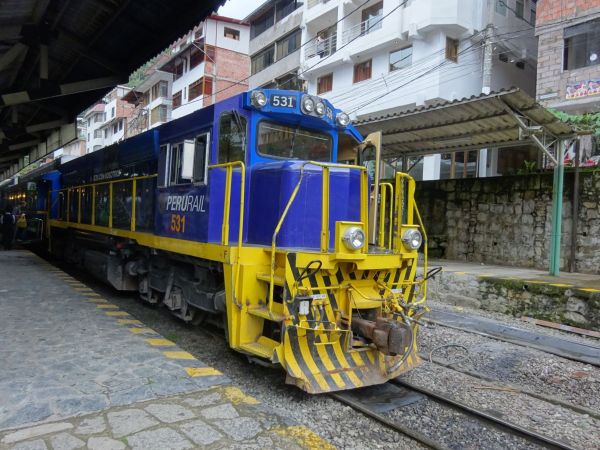
Perurail's locomotive 531 for 914 mm gauge, the same machine as seen above. This is a new machine built by Locomotoras San Luis LSL in 2016.
Picture from Cusco in October 2018 by Adrian Gray.
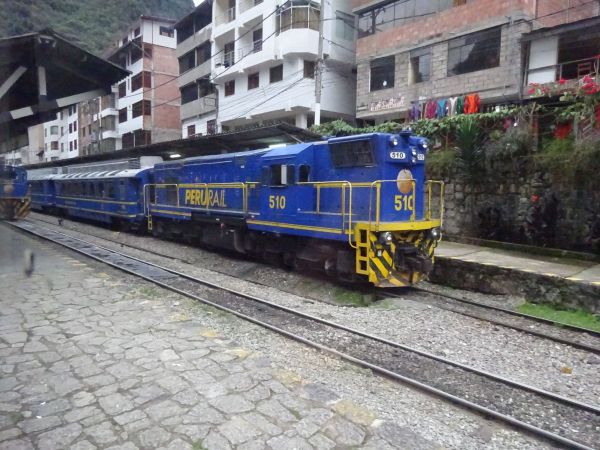
Perurail's locomotive 510 is of the type EMD GR12. It was built already in May 1966 and originally it used to be a standard gauge machine
running for the company Ferrocarril Cerro de Pasco but it was since 2008 regauged to 914 mm gauge. Here we see it leading a 914 mm track
passenger train.
Picture from Cusco in October 2018 by Adrian Gray.
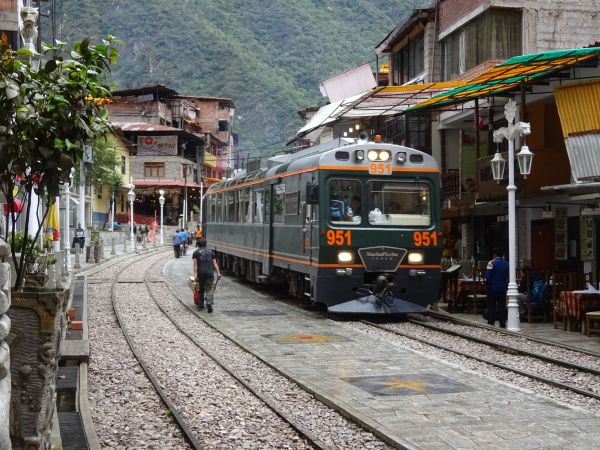
Many tourists want to see the famous inca village of Machu Picchu. To get there they can take a ride from Cusco with this Machu Picchu
train via Ollantaytambo to Aguas Calientes. From there the route up to Machu Picchu would normally be done with buses, but for a fairly long
time the road was under threat by leftist guerrillas called Sendero Luminoso (shining path) and a number of tourists had to be actually
evacuated using helicopters. Aguas Calientes is a town full of hotels and bars for the tourists. Trains - both the exclusive Machu Picchu
trains operated under the brand name of Inca trains, one of which is seen here - as well as cargo trains roll along the very crowded
streets of the village - just like they do also down in Cusco. There's not much space between the tourist's bar tables and the trains.
Machu Picchu tourist train at Cusco. Picture in October 2018 by Adrian Gray.
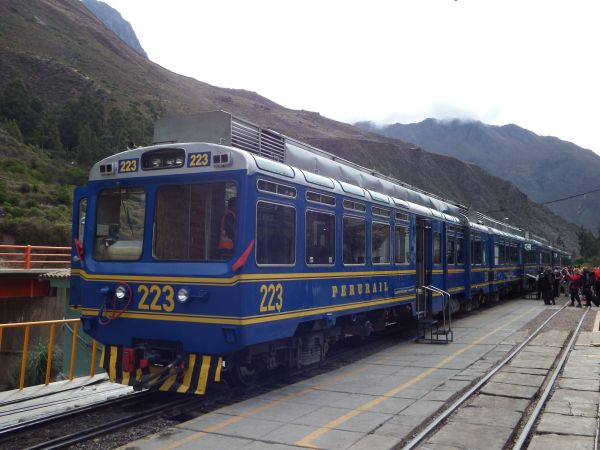
Perurail's 223 is a similar railbus like the one shown above, but as the number 951 above is carrying the green colours of the brand name Inca trains,
this one has retained its Perurail's blue colours. Nevertheless, also this train was running on the same Machu Picchu touristic train service.
Inca trains is just a marketing brand name of Perurail.
Machu Picchu tourist train loading passengers at Cusco "upper station". Picture in October 2018 by Adrian Gray.
Ferrocarril Central Andino FCCA
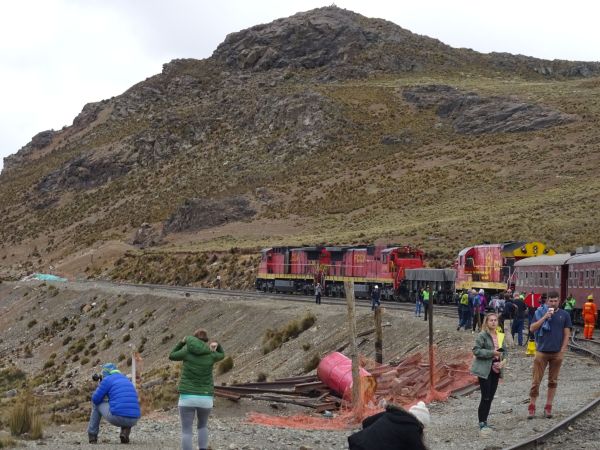
One tourist attraction in Peru that many tourists want to see is a small train station called Galera. It is located along the Lima
to Huancayo railway line operated by the company Ferrocarril Central Andiano FCCA. There's nothing special in itself in this very
small station except that it lies quite next to the Galera summit tunnel at 4783 meters above sea level which makes it the third
highest located railway station in the western hemisphere and the ninth highest up located station in the world. Here a tourist
train has stopped at Galera station for 20 minutes sothat tourists can go out for awhile and experience the very thin and cold
air at almost five km height. In the background a railroad construction train with two locomotives.
Picture from Galera in October 2018 by Adrian Gray.
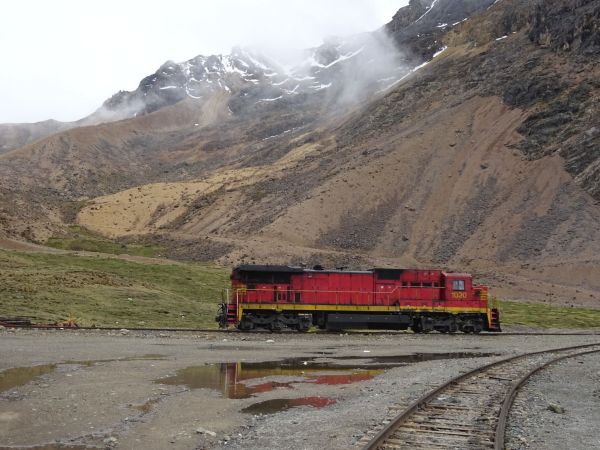
FCCA's locomotive 1020 is of the type General Electric C39-08.
Picture from Galera in October 2018 by Adrian Gray.
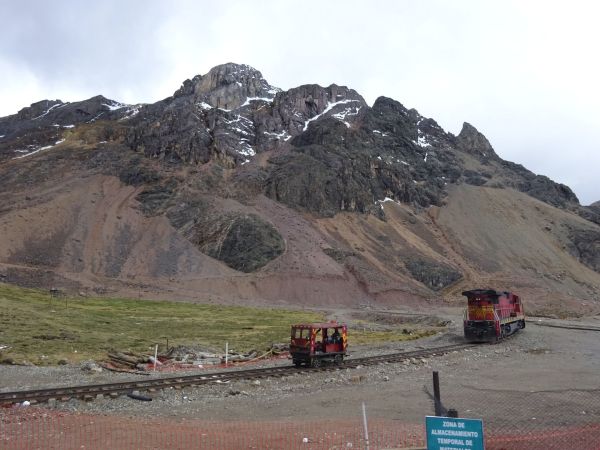
A gravel pit site from where gravel is taken with trains to fix the railway line. In front a small rail inspection vehicle.
Picture from Galera in October 2018 by Adrian Gray.
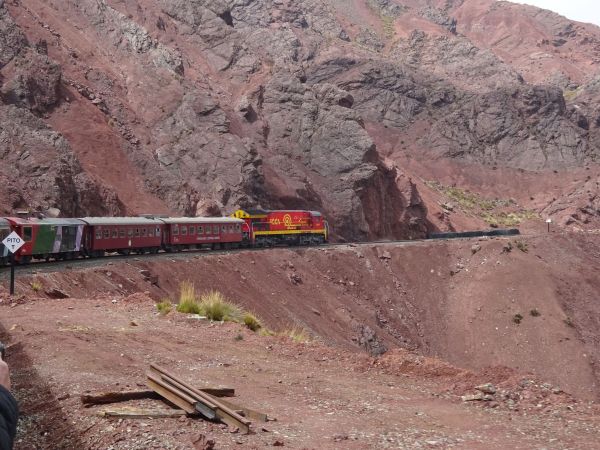
The tourist train is just leaving Galera.
Picture from Galera in October 2018 by Adrian Gray.
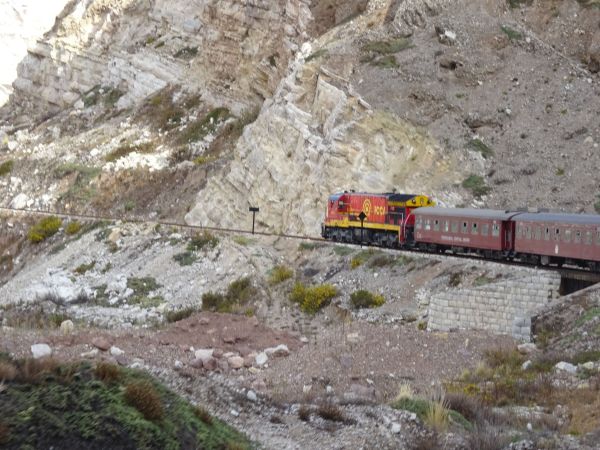
Here the touristic train has left Galera and is now going to descend back down to the Altiplano.
Picture from Galera in October 2018 by Adrian Gray.
Huancayo metro - Metro Wanka
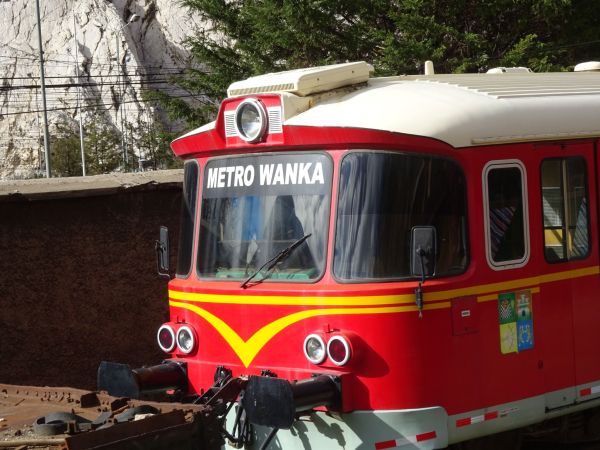
The Huancayo metro or Metro Wanka was a cheating railway project to steal money from the state of Peru. In 2012 the mayor of the city of Huancayo
declared that this city was to become the second city in Peru with a metro system. Money was obtained first for buying the needed rolling stock.
The metro service was supposed to have seven stations near the city of Huancayo high up in the Andes. In practise all that was done was that some
scrapped diesel railbuses of the Danish type Lynette which had been built already in the beginning of the 1960s were bought. It was claimed that
these two coaches long Lynettes
could take up to 300 passengers. Then in 2013 more money from the state was asked for with the excuse that for security reasons a fence on both sides
of the "metro line" should be built. In practise nothing was built at all and in August of 2013 it was announced that the work had been stopped and
even the very old Lynettes were "given elsewhere". A lot of state money disappeared and also the trains disappeared.
This picture shows the front of one of the old Lynettes, a former train of the Helsingør-Hornbæk Banen in Denmark. Picture by Adrian Gray.
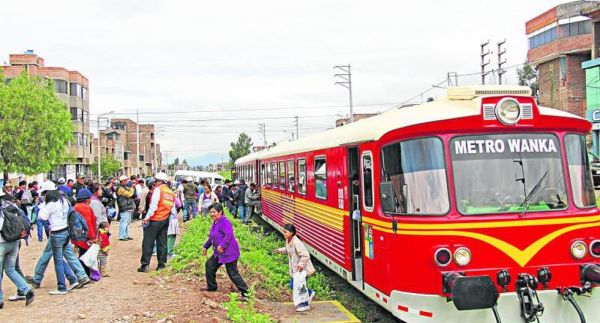
This was the "metro station" of the cheating Metro Wanka project.
Picture by Adrian Gray.

